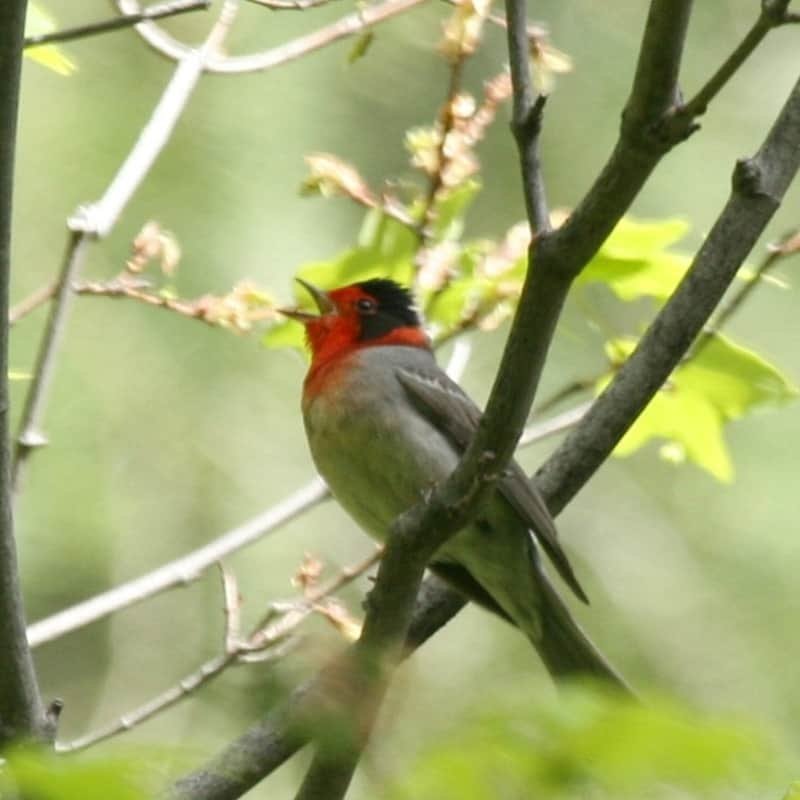The red-faced warbler (Cardellina rubrifrons) is a type of warbler found in the New World. On the rear of the head, where the black crown and gray back meet, the area is occasionally speckled gray or plain white. While feeding, they have an odd habit of flipping their tail sideways.
Quick Overview: Cardellina Rubrifrons – Red-Faced Warbler
Body size: Around 5 in (13 cm) and a weight of 11 g (0.4 oz)
Main colors: Gray, White, Black, Red
Range: Western United States
Migratory Bird: Yes
Best time of the year to see in the U.S.: June, July, August, September
Conservation Status: Least Concern
Red-Faced Warbler Description
Gray upperparts, white neck and rump, and paler gray underparts characterize this medium-sized warbler. The forehead, throat, and upper breast are all flushed red. Black is used for the crown and ear patches. Gray tails are lengthy and have a square tip.

Size
These birds have a length of 5 in (13 cm) and a weight of 11 g (0.4oz). Their wings could range from 7.5 in (19 cm).
Feeding
It mostly feeds on insects, with caterpillars being a favorite food source.
Habitat
Red-faced Warblers are primarily found in evergreen forests with patches of deciduous trees in the United States, often at somewhat high elevations. During the winter months, the habitat is typically high-elevation forest, whether evergreen, mixed, or deciduous.
Behavior
Despite their vibrant coloring, Red-faced Warblers can be challenging to view due to their predilection for foraging in dense foliage.
Cardellina Rubrifrons Scientific Classification
- Kingdom: Animalia
- Phylum: Chordata
- Class: Aves
- Order: Passeriformes
- Family: Parulidae
- Genus: Cardellina
- Species: Cardellina rubrifrons
Best time of the year to see
The best time to see these birds in the United States is during the summer season (June – September).
Distribution of the Red-Faced Warbler in the USA
Breeds at high elevations throughout the Pacific slope and neighboring interior of Mexico, from Sonora to Durango, from central Arizona to western New Mexico. Casual in southern California, where it may breed, and central and southeastern New Mexico; sightings have also been reported in southern Nevada and Texas.
